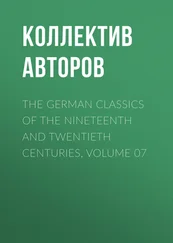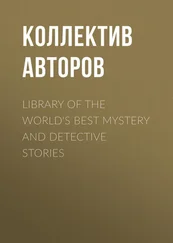Reviewing the initial analysis results of the money functions we can determine their interaction and also pay attention that the function of instrument of circulation and payment should determine the level of the total monetary stock in the country and the function of saving is directly linked with the State monetary policy.
The basic requirement of the money functions performing is the stability of the money circulation whole system.
The comprehension questions
1. Name two basic theories of money origin in the World Economy.
2. What are the basic history stages of money development according to the evolutional theory?
3. List the money functions and elaborate the concepts.
4. The essence of money consists of three features, name them.
Section 2. MONEY TURNOVER, MONEY CIRCULATION AND MONEY SYSTEM
1.2.1. Metal full-bodied money
In the course of historical development initially the system of metal money circulation formed which was based on the metal money usage.
The money qualification which is based on the materially substantial features of the total equivalent allows classifying conventionally the metal money on full-bodied and token money.
The full-bodied (real) money is money the nominal (designated on it) value of which corresponds to its real value, i.e. to the value of metal of which it is produced (an obverse of a coin – adverse, a reverse of a coin – reverse, a ridge – edge).
The first coins appeared in about the XII thcentury B.C.E. in China and in the VII thcentury B.C.E. in the ancient Lydian State (the Asia Minor). The oldest money which were discovered on the territory of Kazakhstan are the ancient coins found during the diggings of such towns as Otrar, Taraz, Turkestan, Balasagun, Suyab. The earliest are dated from the VI thcentury. Before the XXII ndcentury they were produced manually from copper, bronze, gold. As a rule the coins had the images of a family coat of arms – tamga and indicated the title of the main sovereign ruler – kagan. At that times each of them issued their own coins with their title that’s why they greatly differed from each other not only by the images but also by their thickness and form.
Later in the middle centuries in Kypchakiya the territory of which marched with the territory of modern Kazakhstan a silver tanga and a copper poul circulated. The copper coins usually were used for everyday buyings and silver for the foreign trade operations.
After Kazakhstan joint to Russia in the beginning of the XVIII thcentury little by little the Russian coins and monetary units began to circulate in our country. In the pre-revolution Kazakhstan during the monetary reform of 1895-1897 the system of gold monometallism was established with the gold-coin circulation.
The gold, silver and copper coins were used in circulation. The basic type of the monetary units was the State Bank credit notes which on 92 % were ensured by gold. The basic part of the monetary stock consisted of the nominal instruments of circulation which could be freely exchanged on the full-bodied money – gold coins and thus they had the population’s credibility.
Having an inmost value the full-bodied money depends on neither the other types of wealths nor the market conditions in which it circulates. All the types of commodity money belong to the full-bodied money – gold and silver coins.
The token money (the substitute of real money) is money the nominal value of which is higher than real, i.e. its purchasing power exceeds the intrinsic value of the commodity which plays role of the monetary relations bearer. The purchasing power of this money is determined by the market conditions exceptionally whereby the inmost value of token money doesn’t influence on it. The token money includes all the types of paper money, credit notes and metal symbols of value (billion coins – small coins manufactured from copper and aluminum).
In the course of historical development first of all the system of metal circulation formed which was based on the metal coins usage.
Initially (in particular in the XVI th-XVIII thcenturies) the system of bimetallism existed.
Bimetallism is the system where the role of the total equivalent is played by two metals – gold and silver. It means that these two metals circulated on equal basis and had a fixed correlation.
The unlimited circulation, free issue and two prices determination on one good are supposed. This system existed in the XVI th-XVIII thcenturies and in some countries of West Europe even in the XIX thcentury. However such system didn’t provide the stability of money circulation.
There are three systems of bimetallism:
Of the parallel currency where the correlation between the gold and silver coins is spontaneous.
Of the double currency where the government fixed the correlation between metals and the gold and silver coins issue and their popularity were made by this correlation.
Of the limping currency where the gold and silver coins were the legal means of payment but with unequal terms. For example if the silver coins issue was made privately thus practically they played role of the gold symbols.
In the result of silver production cheapening in the end of the XIX thcentury and its devaluation the gold coins began to go out of circulation to treasures, i.e. «bad money drives out good».
In the XIX thcentury the system of bimetallism was replaced by monometallism which was based on only one metal, i.e. only one metal plays role of the total equivalent. The silver monometalism existed in Russia (1843-1852), in India (1852-1893) and in China (till 1935).
The gold coin standard most closely met the requirements of capitalism of the free competition period, promoted the development of production, credit system, world trade and capital export. Sometimes the age of gold coin standard is associated with the fast industrialization and economic prosperity.
Since the First World War little by little gold was drove out of circulation by paper money and credit notes; the process of gold demonetization began which subsequently captured the international circulation.
First of all gold stopped performing the function of the instrument of circulation and payment in the domestic circulation and then in 1976 the function of the world money. For the detailed information look through the chapter «The international currency and credit rela- tions».
As can be seen from the above the system of metal money circulation became a thing of the past. Nowadays the fractional coins are minted from different alloys and aluminum.
1.2.2. Paper money and their circulation consistency
Paper money is relatively new for the world of money. The paper monetary units are token money, only symbols. Usually they appeared in the periods of acute state needs during the wars and revolutions when the other sources of financing (taxes, lendings, etc.) ran out. One more reason of the paper money issue was a chronic deficit of an external state account, in order to avoid the gold drain abroad the government was forced to implement the inconvertible to gold money provided with a forced rate of exchange.
For the first time it was issued in the VII thcentury in China in the form of large denominations in order to replace the inconvenient fullbodied copper coins. And while the notes could be freely exchanged onto the full-bodied they were popular in circulation. Later in the XIII thcentury paper money was issued in Persia and in the XIV thcentury in Japan.
However in other countries the substitutes of «real money», i.e. coins were widely spread. Their nominal was verified with the sovereign’s stamp or a sign and a personal stamp of a merchant or a banker. Initially in the form of complementary means of exchange the deposit receipts of stocked items, taxes payments, loans granting were used. Their circulation increased the trade opportunities but at the same time frequently complicated the exchange of these paper duplicates onto the metal coins.
Читать дальше












